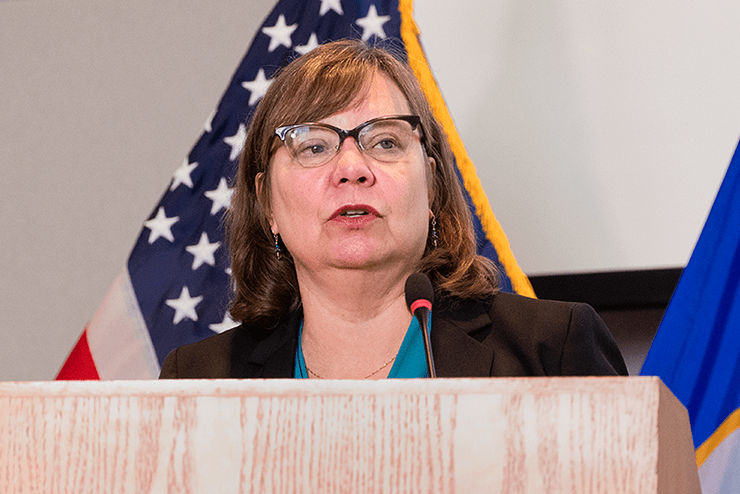
Minnesota’s Governor Hints at More Bar Restrictions As Coronavirus Rates Rise
November 9, 2020
California wine country adapting to annual wildfire threat
November 9, 2020“It’s an exciting tool,” said Voytas, a professor in the College of Biological Sciences and director of the Center for Precision Plant Genomics, both at the University of Minnesota. He also is the chief scientific officer of Calyxt, an agricultural biotechnology company focused on developing crops that provide consumer benefit.
The company’s projects include a high-fiber wheat, which is said to be the world’s first gene-edited, consumer-focused wheat product. The high-fiber wheat is expected to go into commercial planting in 2022.
CRISPR, pronounced “crisper,” has drawn broader attention this fall after the two scientists who developed it received the 2020 Nobel Prize in chemistry. Scientists in many disciplines, including agriculture, already are making widespread use of it, with interest in it growing rapidly.
Put simply, CRISPR allows unwanted genes to be edited or removed — for example, taking out genes to treat or prevent the spread of disease or to increase crop yields. In contrast, genetically modified organism (GMO) technology moves genetic material from one species to another.
Ag officials and scientists have tried to persuade the public, much of which is skeptical of or even worried about GMOs, to accept the use of CRISPR. It’s unclear how much success those efforts are having.
Typically, the traditional plant breeding process — which involves crossing plants with relevant characteristics and selecting the offspring with the desired combination of characteristics — takes 10 to 12 years, l. With CRISPER, “We can work much faster,” Voytas said.
Dan Voytas, University of Minnesota
He cautioned that the greater the number of genes edited, the more difficult and time-consuming it is to reach the desired goal.
Calyxt enjoyed a milestone in 2020, when high-oleic soybeans became the company’s first commercially available gene-edited product in the United States. Farmers planted 72,000 acres to the high-oleic soybeans this year, double the acres planted in 2019.
Calyxt has a number of other projects in the works, too. They include better-yielding hemp, cold-tolerant oats, pulses with improved protein profiles and flavor, and alfalfa with enhanced traits including improved digestibility in livestock fed the alfalfa.
Voytas said he’s confident his company — and agricultural researchers in general — will continue to make greater and more productive use of the CRISPR technology.
CRISPR: The term stands for Clustered Regularly Interspaced Short Palindromic Repeats, which are the hallmark of a bacterial defense system. It’s often described as “genetic scissors ” that help plant researchers find a specific bit of DNA within a cell and then to develop crops that withstand pests and drought, among other things, by removing the DNA snippet.
2020 Nobel Prize for Chemistry winners: Emmanuelle Charpentier, a microbiologist and director of the Berlin-based Max Planck Unit for the Science of Pathogens, and Jennifer A. Doudna, a professor and biochemist at the University of California, Berkeley, received the award jointly. The scientists will split the prize money of 10 million Swedish kronor, or a little more than $1.1 million.
Development of the technology: Charpentier’s research into a certain type of bacteria led to the 2011 discovery of a previously unknown molecule. The same year, she began working with Doudna, and together they recreated the bacteria’s genetic scissors in a test tube and made the scissors’ molecular components easier to use.
Other uses: Research into other uses for CRISPR includes mental health, cancer and heart disease. Perhaps the most controversial potential use for the technology is in human embryos to prevent genetic disorders.
Alfred Nobel: The Swedish chemist, engineer and industrialist, best known for the invention of dynamite, died in 1896. His will funded creation of prizes that eventually became known as Nobel Prizes. They were first awarded in 1901.






